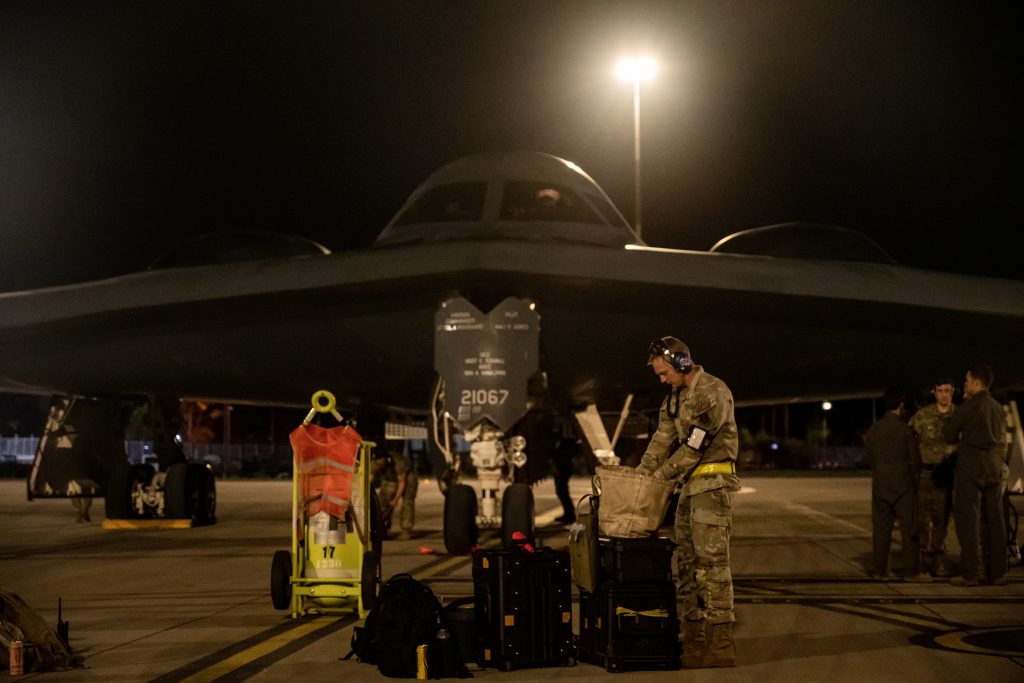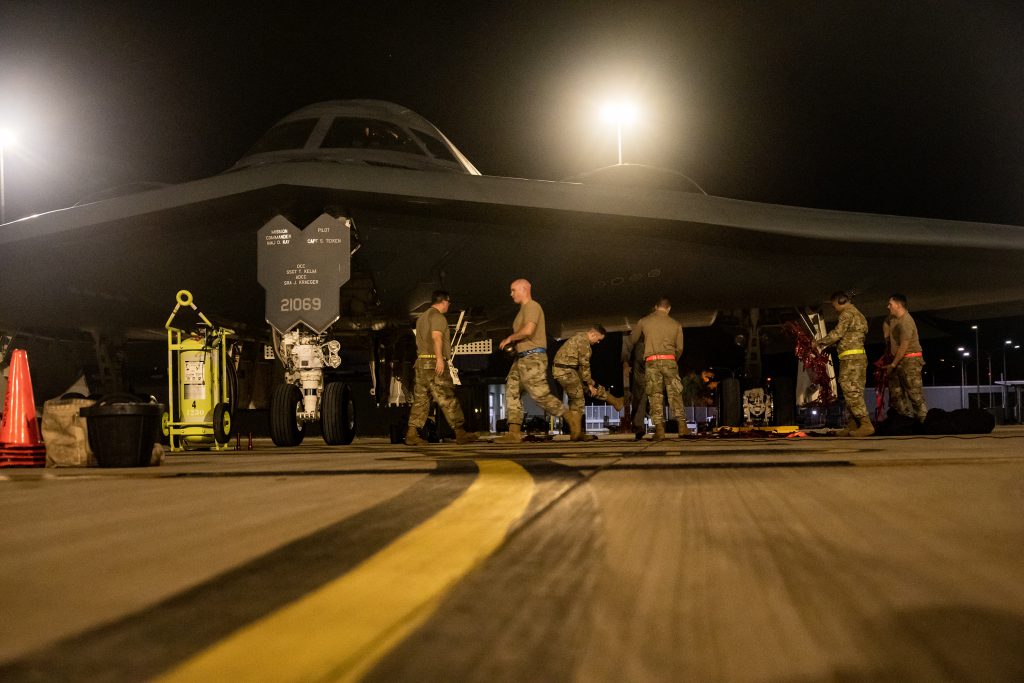Introduction: A Stealthy Arrival in Australia
On August 16, 2024, the skies above RAAF Base Amberley in Australia were graced by the arrival of two U.S. Air Force B-2 Spirit stealth bombers.
This deployment, part of a Bomber Task Force (BTF) mission, symbolizes the deepening military cooperation between the United States and Australia.
The B-2 Spirit: America’s Stealth Ambassador
The B-2 Spirit represents the pinnacle of stealth technology.
Capable of penetrating enemy air defenses undetected, the B-2 has been a critical asset in the U.S. Air Force’s arsenal since its introduction in the late 1980s.
The deployment of these bombers to Australia ensures their strategic importance and the U.S.’s commitment to maintaining a strong, credible deterrent in the Indo-Pacific.
Why Australia? The Strategic Importance of the Indo-Pacific
The Indo-Pacific region is a geopolitical hotspot, with tensions simmering over issues like the South China Sea and North Korea’s missile program.
Australia, with its strategic location, plays a key role in the U.S.’s defense strategy for the region.
By deploying B-2 bombers to Australia, the U.S. is strengthening its military presence and sending a clear message to potential adversaries: the U.S. and its allies are prepared to defend their interests in the region.

The Bomber Task Force Mission: Flexibility and Readiness
The Bomber Task Force (BTF) concept focuses on flexibility. Unlike traditional deployments, BTF missions are designed to be unpredictable, keeping adversaries on their toes.
This unpredictability is a core element of the Dynamic Force Employment (DFE) strategy, which seeks to disrupt adversary planning by being operationally agile.
The B-2’s deployment to Australia is a perfect example of this strategy in action.
Journey to Australia: A Stealthy Transit
The journey of the B-2 bombers to Australia was no ordinary flight.
As the bombers made their way across the Pacific, they relied on high-frequency (HF) radio for communication—a method, while older, remains essential for long-range military flights over vast oceans.
This choice highlights the careful planning and operational security goes into such a mission.
Supporting the Mission: The Role of KC-135 Stratotankers
No long-range bomber mission would be complete without aerial refueling support.
Two KC-135R Stratotankers from the Illinois Air National Guard were also deployed to RAAF Base Amberley to support the B-2s.
These tankers are critical for extending the range and endurance of the bombers, ensuring they can reach their destination and return safely.

U.S.-Australia Defense Cooperation: A Growing Partnership
The B-2 deployment is just one aspect of the growing defense partnership between the U.S. and Australia.
This cooperation was recently highlighted during the U.S.-Australia Ministerial Consultations on August 6, 2024, where both nations committed to increasing U.S. military presence in Australia.
This includes more frequent rotational bomber deployments, increased maritime patrols, and the construction of new military infrastructure.
The Bigger Picture: Projecting Power in the Indo-Pacific
Beyond the immediate mission, the B-2 deployment to Australia is part of a broader U.S. strategy to project power in the Indo-Pacific.
This includes the construction of facilities at RAAF Tindal to house B-52 bombers and other strategic assets.
These efforts are aimed at enhancing the U.S.’s ability to operate in the region and maintain a credible deterrent against potential adversaries.
Agile Combat Employment: A New Way of Warfighting
The concept of Agile Combat Employment (ACE) is central to the U.S. Air Force’s strategy in the Indo-Pacific.
ACE involves operating from austere airfields, highways, and other unconventional locations, making it harder for adversaries to target U.S. forces.
This strategy was recently practiced by the 509th Bomb Wing during a Field Training Exercise in Arkansas, where airmen honed their skills in operating independently in challenging environments.
Dynamic Force Employment: Keeping Adversaries Guessing
DFE’s key principle is unpredictability. By deploying forces in unexpected ways and from unexpected locations, the U.S. aims to keep potential adversaries off balance.
The B-2 deployment to Australia is a textbook example of DFE in action, demonstrating the U.S. Air Force’s ability to project power anywhere in the world on short notice.
The Future of U.S.-Australia Military Cooperation
As the geopolitical landscape in the Indo-Pacific continues to evolve, so too will the U.S.-Australia defense partnership.
Future deployments, joint exercises, and infrastructure projects will likely continue to enhance the military capabilities of both nations.
This partnership is about ensuring a free and open Indo-Pacific for all.
Conclusion: A Partnership for the Future
The deployment of B-2 Spirit bombers to Australia is more than just a military maneuver; it’s a symbol of the enduring partnership between the United States and Australia.
As both nations continue to work together to address the challenges of the Indo-Pacific, this partnership will only grow stronger, ensuring peace and stability in the region for years to come.


































